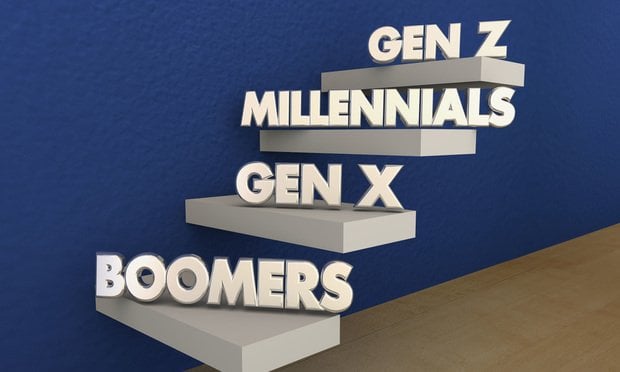 Companies thathave a "digital, world-class HR operating model" will be able tofill 75 percent more open positions–at 39 percent lower cost.(Image: Shutterstock)
Companies thathave a "digital, world-class HR operating model" will be able tofill 75 percent more open positions–at 39 percent lower cost.(Image: Shutterstock)
What will the HR function look like in 2025?
|Artificial intelligence will significantly step up thepersonalization of digital tools for both employees and managers –that is, if organizations are "bold" enough to embrace suchtransformative models, according to The Hackett Group's report,"The CHRO Agenda: Become the Force Behind EnterpriseAgility."
|Why is this especially good news for HR organizations?
|Related: How do 'world-class' HR departments spend theirmoney?
|Those that have a "digital, world-class HR operating model" willbe able to fill 75 percent more open positions–at 39 percent lowercost and 18 percent faster than peers, The Hackett Group estimates.Moreover, such organizations will be able to enjoy a 25 percenthigher employee experience score, enabling them to recruit andretain vital skills; are four times more likely to make decisionsquickly and 10 times more likely to execute rapidly on thosedecisions; are 72 percent more likely to respond quickly to majornew product, service or line-of-business introductions; and will beable to operate the HR function at a 51 percent lower cost.
|"Making the leap to a more agile, responsive, intelligent andinnovation-driving HR operating model will not happen throughincremental change," the authors write. "Rather, it will requirebold thinking and broad transformation of the function's culture,structure, people, platforms and processes to enable enterpriseperformance and competitive advantage through talent and humancapital."
|However, too many HR organizations are still woefully behind thedigital curve, as the typical organization devotes half of itsstaff and budgets to administration and transaction processing,according to The Hackett Group's benchmarks.
|"Business partners spend much of their time dealing withday-to-day HR issues, leaving them little time to focus onstrategic, forward-looking initiatives," the authors write. "At thesame time, the traditional HR operating model focuses moreattention on running the function than it does on working withsenior executives and the board to enable enterprise performancethrough human capital strategy."
|By now, virtually every HR professional has heard that they mustbe more proactive in elevating their role within their company frommerely a service provider to a "transformative strategic advisor."It's been preached to them for a decade or more, but now it's evenmore critical in this digital age, The Hackett Group contends. Buthow to realistically accomplish that?
|One way is to implement the group's suggested "digital servicedelivery model," which places customer orientation at the core,with three design principles and six interdependent components,according to the report. The Hackett Group suggests the followingaction steps around these components:
- Technology: reduce technology complexity"ruthlessly;" invest more in emerging technologies such aschatbots, robotic process automation and cognitive AI; utilizesmart automation for 50 percent or more of HR processes; increaseplatform scalability and infrastructure agility.
- Service design: adopt "a laser focus" onmanager and employee experience; establish ubiquitous manager andemployee self-service; put stakeholders first in service design;promote a "consumer-obsessed" service mentality.
- Analytics and information management: deliveranalytics on-demand for all aspects of HR services; provideomnichannel access to information and insights; train 100 percentof HR staff to become "analytics ninjas;" focus scorecards onbusiness-critical HR metrics; use analytics to slate candidatesfaster.
- Organization and governance: bring strategicservice execution to customers; apply business value-based HRportfolio management to prioritize effort; place clear talentresponsibility and accountability with business leadership.
- Service partnering: elevate strategicthird-party relationships to a critical node of the HR operatingmodel; base vendor key performance indicators and pay forperformance on business outcomes; incorporate vendors'transformation capabilities into day-to-day delivery.
- Human capital: Ensure HR leaders drive aculture of innovation and speed to value; revise and create newroles, incorporating advanced analytical, relationship management,communication, collaboration and digital technology skills into HRprofiles; evaluate and upskill/upgrade staff for 2020 and beyond;"supercharge" learning and development programs, and base promotionand raise eligibility on completion of learning tracks.Implementing this model will help HR professionals transition to"transformative strategic advisors," according to The HackettGroup.
"Fortified by analytics and AI, they will have the time, toolsand insights needed to work productively with senior businessleaders on areas such as enterprise talent strategy, human capitalproductivity and performance, effective leadership, andorganizational culture," the authors write.
|Read more:
Complete your profile to continue reading and get FREE access to BenefitsPRO, part of your ALM digital membership.
Your access to unlimited BenefitsPRO content isn’t changing.
Once you are an ALM digital member, you’ll receive:
- Critical BenefitsPRO information including cutting edge post-reform success strategies, access to educational webcasts and videos, resources from industry leaders, and informative Newsletters.
- Exclusive discounts on ALM, BenefitsPRO magazine and BenefitsPRO.com events
- Access to other award-winning ALM websites including ThinkAdvisor.com and Law.com
Already have an account? Sign In
© 2024 ALM Global, LLC, All Rights Reserved. Request academic re-use from www.copyright.com. All other uses, submit a request to [email protected]. For more information visit Asset & Logo Licensing.








